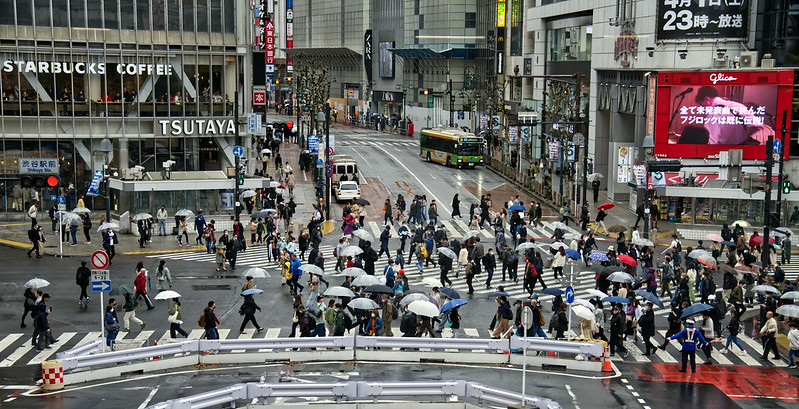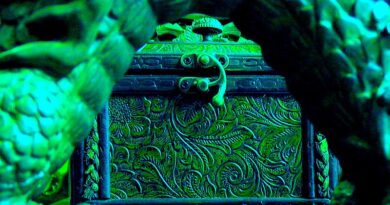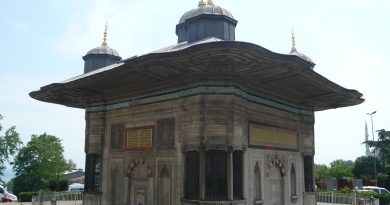Shopping in Tokyo
On the face of it Tokyo seems to conform to all its stereotypes; overwhelmingly big (55 miles from east to west, 15 miles from north to south), frighteningly modern, constantly evolving, frantically paced and packed with hordes of identically clad ‘salarymen’ fighting their way to and from their offices.
But amidst all this you’ll find another – equally authentic – side to the city; a stalwart adherence to traditions and manners, back streets cramped with wooden houses and bonsai trees, tranquil Shinto shrines and Buddhist temples and a multiplicity of identities.
At its heart, Tokyo abounds with contradictions; it has a schizophrenic personality that refuses to be pinned down. Perhaps the only thing that really binds the city together is its voracious appetite for consumption. In Tokyo everything is a commodity from clothing and gadgets to cultural pursuits and leisure activities. If you come here to shop you’ll soon discover you’re not alone: the whole city will be standing shoulder to shoulder with you, doing it too. And while you’ll be up against Tokyo’s paradoxes constantly, take note of this one before you start your big spend: in this most capitalistic of societies it can sometimes be hard to get your hands on your money in order to part with it. Many here still prefer cash.
Tokyo needn’t break the bank either; there are plenty of free activities (people watching is a must), cheap eateries and reasonably priced shopping options here. Start the show on Rainbow Bridge – views of the metropolis and across the bay to Mount Fuji on a clear day.
- Ginza was Edo’s (the city was the renamed Tokyo in 1886) first entertainment and shopping district, dating from the sixteenth century. Destroyed many times, it developed into one of Tokyo’s finest shopping areas after World War II. These days, despite competition, it retains its reputation for ostentatious spending and oozes snobbish superiority. It’s the epicentre of departos (department stores) like Mitsukoshi and Matsuya whose window displays are works of art in their own right.
- Japan leads the world in technological innovation and where better to sample its delights than the Sony Building, a 6-floor showroom of the company’s latest and not-yet-released electronic gadgetry? It’s a hands-on place; try out microscopic digital cameras, the latest games in the Playstation centre, watch perfect quality films in the HiVision theatre (all in Japanese) and bond with Aibo, the famous artificial intelligence robo-dog. The latest model can recognise up to 50 simple words, including its name, and can take photos through a camera in its nose.
- If it feels like you’ve been catapulted into some strange futuristic fantasy go to the nearby Imperial Palace and remind yourself that Japan is still linked to its past. Since it’s still home to the emperor, tourists are restricted to the outer area with its remnants of Edo-jo castle (once the biggest in the world) and the Imperial East Garden, an oasis of peace and characteristically Japanese with clear lines and attention to detail.
- Arriving in Shibuya from the subway is truly a Blade Runneresque experience. Walking into the Hachiko Plaza you’re surrounded by a teeming mass of people, assaulted by neon and vast video screens (some six storeys high) blasting out ads, music videos and trailers. This is one of Tokyo’s main youth hangouts; crammed with more departos and trendy stores. But right now it’s time for a makeover with a difference. At Maiko Make Over Studio you can get under the skin of Japan’s mysterious Geishas by becoming one! In an hour you’ll be transformed by make-up, kimono, obi (belt), wig and sandals into a maiko-san (10,000 Yen – around £50/$83) or geiko-san (12,000 Yen – around £60/$100) and sent away with souvenir photos. Men aren’t left out; samurai makeovers are also available.
Back out in the craziness of Shibuya, sample two of Tokyoites’ favourite ways of unwinding. Pachinkoparlours are everywhere. This national game is a vertical version of pinball – exasperating, annoying and impossible to win. Karaoke originates in Japan and as with most other elements of life the Japanese approach it with an obsessive verve. Many bars offer nomi-hodai, utai-hodai (all you can drink, all you can sing) deals for as little as 500 Yen (around £2.20/$4.20) per hour. If making a fool of yourself in public isn’t your thing rent a booth. Karaoke-Kan has 65 rooms with systems that include recent English hits, reams of Beatles tunes and the latest Japanese faves. The top floor has rooms with fancy lighting effects and mirror balls. Japanese scientists are currently working on a machine to correct flat notes.
- With over 70,000 restaurants of every imaginable hue from American diners to Indian curry houses, Tokyo is a foodie’s heaven. With so much choice, restaurateurs are forced to come up with ever more outlandish ideas to attract customers in a country where people rarely entertain at home. Ninja, a replica Edo period village staffed by Ninjas, is currently one of the hottest eateries in town. Diners are led through a maze of narrow passages punctuated by secret doors and bridges to a complex of cell-like intimate dining areas. After a meal of nouveau Japonais cuisine you’ll be treated to a personal conjuring show, chosen from two different ‘magic courses’.
- If this sample of Japanese cuisine has whetted your appetite Tsujiki Fish Market should be your next stop. It’s appropriate that a country that gets over half its protein from the sea should have the biggest wholesale fish market in the world; 3,000 tons of fish are sold here everyday. Business starts at 4am with auctions of gigantic tuna. All conceivable underwater creatures are available: octopi, blowfish, oysters and Japan’s foremost delicacy the potentially poisonous fugu fish. Stop at a little shrine where people pray for the souls of fish and then nosh down on a sushi breakfast at one of nearby stalls. If eating raw fish isn’t adventurous enough for you try Kuruma-ebishrimps (live till you bite into them) or Shirauo odori gui (dancing whitebait that wiggle down your throat).
- When it comes to fashion, teenagers blaze a trail for the older generations to follow so, because the average shopper is under 20 in Harajuku, this area is probably the place to come for budding fashionistas. Fashion is far more than the empty series of fads it may appear to the casual observer. The adoption of western tribal identities is a symptom of young Japan’s need to recast itself in a society that’s become far more economically uncertain than it was in its parents’ day. The daily fashion parade on view here is a far cry from the stereotypical Japanese worker clone. Harajuku is brimming over with flagship stores for exclusive Japanese labels like legendary Nigo’s ultra-cool, ultra-hard-to-find A Bathing Ape range. The new women’s spin-off is called Bapy, discreetly located in a blue tiled store in no way resembling a shop. Hysteric Glamour for women has developed a strong international reputation with its firebrand kooky fashions.This is where to stock up in preparation for hitting the town later.
Bisecting the area is Omotesando, the Melrose Avenue of Tokyo, lined with designer boutiques and copies of French sidewalk cafes. In this capital of kawai (cute) culture you’ll find its leading proponent: Kiddy Land. This is a four-floor toy store packed to the rafters with kawai paraphernalia including Hello Kitty, Barbie, Pokemon, Digimon, cell phone accessories and a whole floor dedicated to the comic character Ultraman and every monster he’s ever fought! . Opening hours: 10am-8pm daily. Closed third Tues of every month.
Also along Omotesando is Oriental Bazaar, the perfect place for souvenir shopping: kimono (vintage in the basement), Japanese paper products, fans, jewellery, screens, wood block prints and chinaware are all available at reasonable prices. The tour of Kiddy Land could be led by a ‘Cos Player’ (a member of a group who congregate in this area and dress up in twisted-cutesy costumes resembling manga characters).
All this rampant consumerism takes place right next to Meiji-Jingu, the great Shinto shrine dedicated to the soul of the nineteenth century Emperor Meiji, that’s set in Yoyogi Park, a 178-acre forest. Nip in here and it’s like pressing pause.
- Feeling guilty about the hole in your wallet? Check into a Capsule Hotel, perfectly formed for Tokyo’s chronic space shortage and developed in the early eighties for Japanese businessmen who’d been out drinking and missed the last train home. At around 4,400 Yen (around £22.50/$32.10) per night you’ll get a stacked, coffin-like cocoon replete with a bed, a TV, alarm clock, light and (hopefully) your shopping. While you’re out you’ll have to stow away your stuff in a locker. This option is probably a one-night stand for the curious only. Most are men-only but Fontaine Akasaka welcomes both sexes.
- Cleanliness is another Japanese obsession and has its roots in the Shinto ritual of washing before entering a holy place. For a bit of relaxation before hitting Tokyo’s exhausting nightlife go to one of the city’s three remaining genuine onsen (hot spring) baths. In the quaint, old Edo-flavoured neighbourhood Azabu Juban in Roppongi is an onsen, replete with mineral and gas laden ‘black water’, that’s known for its medical benefits and heated to a comfortable 26C, a cool stone bath and a sauna cabin. Just make sure you adhere to the complicated, traditional rules of Japanese bathing.
- It’s getting late; the perfect time to hit Roppongi. This is the city’s most fashionable after-dark hangout where expat Europeans and Americans rub shoulders with the natives and home to some of the city’s best bars, clubs and restaurants. Drinking is a major activity in Japan and is almost always accompanied by eating; don’t be surprised if a plate of snacks appears when you’re sitting in an izakaya(the closest approximation of a Japanese pub there is) or even a western-style bar. Hundreds of clubs and bars cater to every taste imaginable here. Velfarre leads the club pack with its three floors, 36 video screens and artificial snowstorm machines. It’s supposedly the biggest dance venue in Asia.
- Shinjuku is considered the most vigorous area of Tokyo by many. Two million people pass through its station everyday. Shinjuku is one of the best areas to tour Tokyo’s eclectic buildings.
Here you can view the Tokyo Metropolitan Building, (3F, 2-8-1 Nishi-Shinjuku, Shinjuku-ku) considered the last great edifice of postmodernism and designed by Japan’s foremost architect Tange Kenzo.
While you wander you’ll have time to observe more of the minutiae of Tokyo street life; a plethora of vending machines sell anything you can imagine from beer to ‘freshly picked’ vegetables and cartons of eggs while yatai (portable food stalls) ply their wares down many Tokyo corridors offering traditional fare like oden and ramen and more international cuisine like kebabs, burritos and Vietnamese curries.
- To round off your trip take a lift up to the 52nd floor of the Park Hyatt Hotel for the New York Bar. At over 700 feet up in the air, with surrounds of dark wood and floor to ceiling windows, this is one of the best rooftop bars in the world. Sip on a cocktail or sample one of their wines and take in the breathtaking views; on a clear day you can see as far Mount Fuji while the neon-lit night skyline is a sight to behold.




